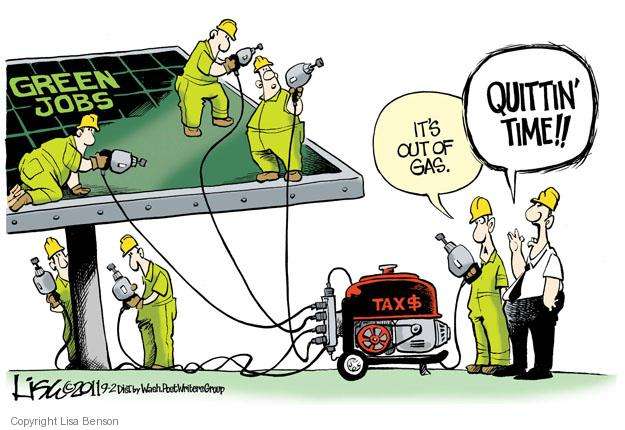

Nevada voters passed Question 6 on Tuesday, which calls for the state to use 50 percent renewable energy by the year 2030. Supporters say Question 6 will generate hundreds of millions of dollars in economic activity and create thousands of new Nevada jobs (sic)
“Clean energy is putting Nevadans to work, with more than 25,000 strong employed in 2017,” said Ray Fakhoury, state policy manager with the national business group Advanced Energy Economy, in statement. “By increasing the state’s renewable standard, Nevada has set itself up to continue reaping the economic benefits for years to come.”
Major corporations, including casinos and data centers, have recently been investing heavily in renewable energy in Nevada. With the passage of Question 6, Alli Gold Roberts, senior manager of state policy with Ceres, said the state is “poised to continue to attract corporate renewable energy investment.”
Question 6, to boost the RPS to 50 percent, will now have to pass again in 2020 in order to become law. AEE’s Fakhoury said consumers could see benefits sooner than that. “Passing with wide support, the legislature and governor-elect should move forward in the upcoming legislative session to enact this landmark increase,” he said.
 Corporate clean energy buyers invested heavily in a separate Nevada ballot measure, Question 3, which sought to deregulate Nevada’s retail electricity market, but the measure was ultimately unsuccessful. Question 3 was the subject of fierce debate. According to the Nevada Independent, it was backed by Sheldon Adelson’s Sands Corp. (Adelson also happens to be a major Republican donor) and the data company Switch, as well as many clean energy and environmental groups.
Corporate clean energy buyers invested heavily in a separate Nevada ballot measure, Question 3, which sought to deregulate Nevada’s retail electricity market, but the measure was ultimately unsuccessful. Question 3 was the subject of fierce debate. According to the Nevada Independent, it was backed by Sheldon Adelson’s Sands Corp. (Adelson also happens to be a major Republican donor) and the data company Switch, as well as many clean energy and environmental groups.
But there were also concerns about how Question 3 would affect electricity rates and clean energy adoption. The Natural Resources Defense Council, the Sierra Club, Southwest Energy Efficiency Project, and Western Resource Advocates came out against deregulating Nevada’s electricity market because of the disruption they said it would cause to the state’s clean energy progress. NV Energy also opposed Question 3, and planned to spend $30 million on defeating it.
 Arizona rejects 50% RPS
Arizona rejects 50% RPS
Arizona voters overwhelmingly rejected Proposition 127 on Tuesday, a constitutional amendment that would have required 50 percent of the state’s electricity to come from renewable sources by 2030. It’s a significant victory for the state’s largest utility, Arizona Public Service (APS), which spent heavily to oppose the measure. California billionaire Tom Steyer’s political group NextGen America funded efforts in support of the measure.
Proposition 127 was by far the most expensive ballot initiative in Arizona state history. Opponents said the measure would increase electric bills by forcing utilities to build new solar and wind plants, which would result in the early closure of coal plants and the state’s lone nuclear plant. Supporters argued those claims were unfounded given that renewable energy resources are now competitive with fossil fuels, even when coupled with battery storage.

APS was particularly outspoken about losing the Palo Verde nuclear plant if the RPS measure passed. If that plant goes offline, the utility argued, greenhouse gas emissions in the state would rise.
While Proposition 127 has failed, Arizona regulators are still considering a proposal to increase Arizona’s RPS to 80 percent by 2050 and broaden it to also include nuclear power. APS generally supports that plan.
 Colorado votes down a fracking ban
Colorado votes down a fracking ban
Colorado voters rejected a measure Tuesday that would have blocked new oil and gas drilling within 2,500 feet of homes, schools and other occupied areas.
Proposition 112 stemmed from complaints that fracking was encroaching on populated areas, creating health and safety concerns. An analysis showed that the measure would have blocked new oil and gas wells on 85 percent of nonfederal land in Colorado, which is America’s fifth-largest gas-producing and seventh-largest oil-producing state.
 Washington state rejects a carbon price — again
Washington state rejects a carbon price — again
Washington state has failed, once again, to pass a carbon tax. Initiative 1631, the Carbon Emissions Fee Measure, would have set a carbon fee starting at $15 per ton in 2020, rising to around $55 per ton in 2035, depending on inflation.
This is the second major election in a row in which Washington voters have rejected a ballot initiative that would put a price on carbon emissions. The first such ballot was proposed in 2016 and failed.
Tuesday’s loss may cast doubt on the broader narrative that states will lead on climate action in the absence of federal leadership, or it could signal that Americans simply aren’t ready to get behind a carbon tax. Alternatively, it could have all come down to spending. Supporters of Initiative 1631 spent at least $12 million to advance the measure, while opponents spent more than $25 million.
Source: Greentech Media Midterms 2018: Mixed Results for the Renewable Energy Agenda
Background: Five States to Vote on Futile Climate Proposals
_a06c9___Gallery.jpg)
